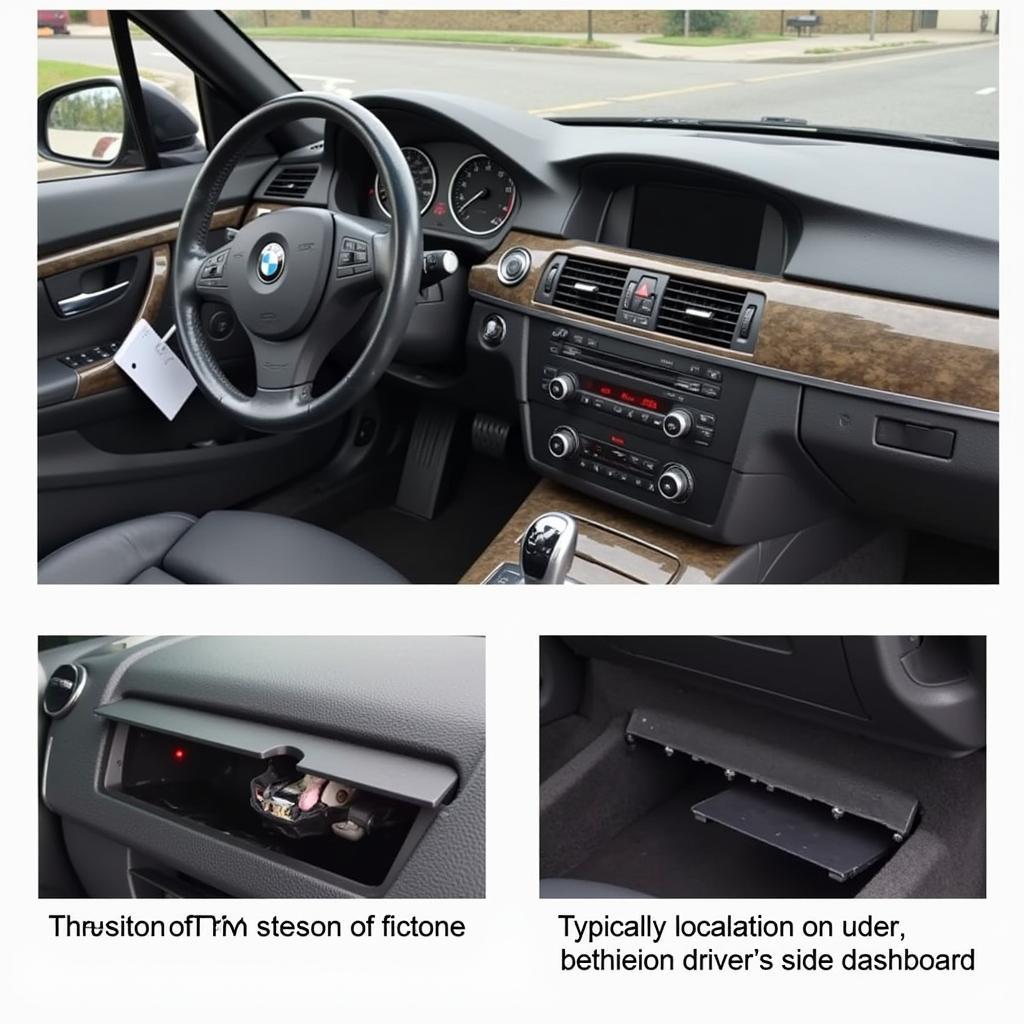“The sound of a car is a powerful emotional connection between the driver and the machine.” – Robert Ebermann, (Fictitious) Automotive Sound Engineer and author of “The Art of Engine Sound”
BMW Active Sound Design is a revolutionary system that amplifies and modifies your car’s engine noise. By injecting synthesized sounds through the car’s speakers, it provides a more engaging and dynamic driving experience, especially noticeable in the cabin. It can enhance the perception of the engine’s power, make the car sound sportier, or even offer a quieter, more refined ride. But like any complex automotive system, it can have its share of issues.
Understanding BMW Active Sound Design
Active Sound Design primarily uses two components: an external sound module, often located near the exhaust system, and the car’s audio system. The sound module receives data about engine speed, throttle position, and other parameters. It then processes this information and generates sound signals that are transmitted to the car’s speakers. This creates an augmented engine sound that is synchronized with the car’s performance.
Common Issues with BMW Active Sound Design
- No Sound: One of the most common problems is a complete absence of augmented engine sound. This can be due to a malfunctioning sound module, a blown fuse, or a software glitch.
- Distorted Sound: If the augmented engine sound is distorted or crackling, it could indicate a problem with the speakers, wiring, or the sound module itself.
- Intermittent Sound: An intermittent sound, where the augmented engine noise cuts in and out, can be frustrating. This is often caused by loose connections or a faulty sound module.
- Inconsistent Sound Levels: Fluctuations in the volume of the augmented sound, despite consistent engine operation, could point to software issues or a need for recalibration.
Identifying the Root Cause of Active Sound Design Problems
Diagnosing Active Sound Design issues often requires specialized diagnostic tools. These tools can read and interpret fault codes stored in the car’s computer, providing valuable insights into the problem. Visual inspections of the wiring and connections are also essential.
Software vs. Hardware Issues: Pinpointing the Culprit
- Software Issues: Software glitches can disrupt the communication between the sound module and the car’s audio system. Updates or reprogramming of the sound module’s software can often resolve these issues.
- Hardware Issues: Hardware problems can involve faulty sound modules, damaged speakers, or worn-out wiring. In such cases, replacing the defective component is usually the solution.
Troubleshooting Active Sound Design Issues
- Check the Basics: Start with the simple things: make sure the volume for the augmented sound is turned up in the car’s infotainment system. Also, verify that the Active Sound Design feature is enabled in the settings menu.
- Inspect the Fuses: Locate the fuse for the Active Sound Design system in your car’s fuse box and inspect it for any signs of damage. Replace it if it’s blown.
- Visual Inspection: Examine the wiring and connections around the sound module and speakers for any loose or damaged wires.
- Use a Diagnostic Tool: A professional-grade diagnostic tool, like those from Cardiagtech, can read and interpret fault codes related to the Active Sound Design system, helping pinpoint the problem area.
- Software Update: Check if a software update is available for your car’s infotainment system or the sound module itself. Updates can often address software bugs that affect the Active Sound Design.
Tools for Repairing BMW Active Sound Design
- Diagnostic Scanner: A diagnostic scanner is crucial for reading and clearing fault codes related to the Active Sound Design system. It allows you to access the system’s parameters and monitor its operation.
- Software Update Tools: These tools enable you to update the software of the sound module or the car’s infotainment system.
- Multimeter: A multimeter is useful for checking the continuity of the wiring and testing the voltage at various points in the system.
Repairing Active Sound Design: A Step-by-Step Guide
- Identify the Problem: Use a diagnostic scanner to read fault codes and pinpoint the issue.
- Check for Software Updates: If the problem is software-related, update the sound module’s software or the car’s infotainment system.
- Repair or Replace Components: If a hardware component is faulty, repair or replace it as necessary. This may involve replacing the sound module, speakers, or wiring.
- Test the System: After completing the repair, thoroughly test the Active Sound Design system to ensure it’s functioning correctly.
Frequently Asked Questions
Can I adjust the sound settings of the Active Sound Design system?
Yes, many BMW models allow you to adjust the intensity and characteristics of the augmented engine sound through the car’s infotainment system.
Is it possible to turn off Active Sound Design completely?
Yes, in most BMW models, you can disable the Active Sound Design system through the car’s infotainment settings.
Does Active Sound Design affect engine performance?
No, Active Sound Design is purely an audio enhancement system and does not impact the engine’s performance in any way.
Can I install Active Sound Design in a BMW that didn’t come with it from the factory?
While aftermarket Active Sound Design systems are available, professional installation is highly recommended to ensure compatibility and proper integration with the car’s electronics.
Can I use any diagnostic tool to troubleshoot Active Sound Design problems?
For comprehensive diagnostics and repair, it’s recommended to use a diagnostic tool specifically designed for BMW vehicles, such as those offered by Cardiagtech.
Conclusion
BMW Active Sound Design is a fascinating technology that adds a new dimension to the driving experience. While it can experience occasional issues, understanding the system and knowing how to troubleshoot common problems can help you enjoy its benefits to the fullest. For expert assistance with diagnosing and repairing Active Sound Design issues in your BMW, contact Cardiagtech at +1 (641) 206-8880 or email us at CARDIAGTECH[email protected]. Our team of certified technicians, located at 276 Reock St, City of Orange, NJ 07050, United States, is equipped with the latest diagnostic tools and expertise to provide comprehensive solutions for your BMW’s electronic needs.


